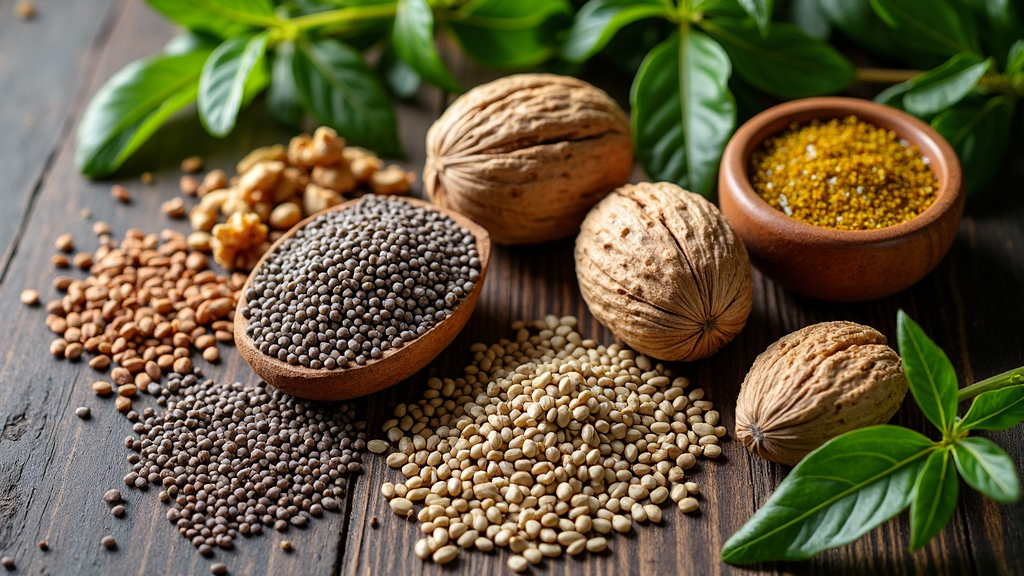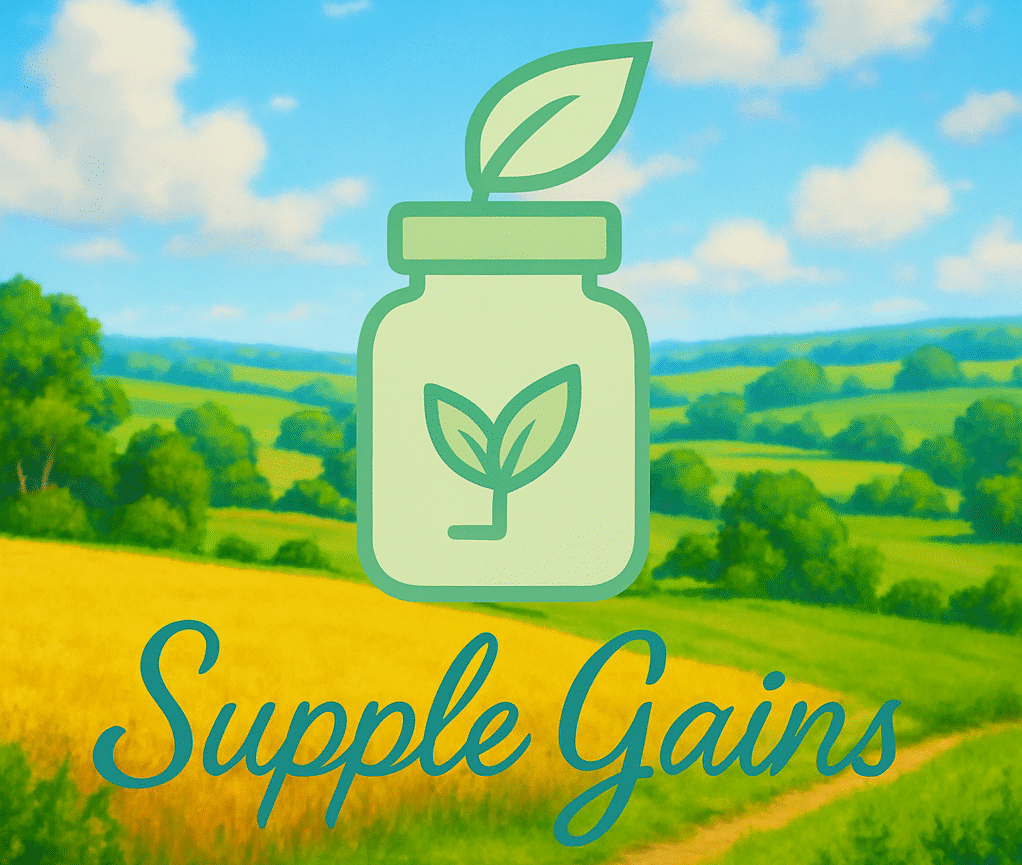Omega-3 fatty acids play a really important role in keeping your heart and brain healthy, but finding good sources gets tricky if you’re vegan or vegetarian. Most people think of fatty fish first, but plenty of plantbased foods and supplements can definitely help you get enough omega-3s, without having to rely on any animal products. Whether you’re new to this way of eating or looking for new ideas to boost your omega-3 intake, I’ve got you covered with everything I’ve learned on my own plantbased adventure.

Why Omega-3 Fatty Acids Matter in a PlantBased Diet
Omega-3s are a group of essential fats that your body needs for health but can’t make from scratch, so you have to get them from your food. They’re linked to things like better brain health, mood balance, healthy eyesight, and reduced risk for certain chronic diseases, including heart disease. The three most talkedabout omega-3s are ALA (alphalinolenic acid), EPA (eicosapentaenoic acid), and DHA (docosahexaenoic acid). Animals, especially fish, are famous for providing EPA and DHA, but for vegans and vegetarians, the main story starts with ALA, which comes from plants.
The challenge is that your body can convert some ALA into EPA and DHA, but that conversion isn’t super efficient. So, it’s a good idea to eat a mix of highALA foods and, if needed, track down some veganfriendly supplements to cover your bases. Keeping an eye on omega-3s is pretty important for anyone following a plantbased lifestyle. And, since our diets can change over time, it’s a smart move to regularly think about your intake and adapt as needed.
Top PlantBased Omega-3 Sources
Fitting more plantbased omega-3 foods into meals is easier than it seems. Here are my go-tos and how to use them:
- Chia Seeds: Just one tablespoon gives a nice amount of ALA. I usually toss them in overnight oats, smoothies, or sprinkle over salads. When soaked, chia seeds turn gellike, making them a great thickener in vegan puddings or jams.
- Flaxseeds: Flaxseeds are one of the richest sources of ALA. Ground flax (instead of whole) gets digested best, so I always buy it ground or grind it myself. It’s super easy to stir a spoonful into cereal, baked goods, or even use as a vegan egg replacer in recipes. You can also mix them into smoothies or energy bites for a little crunch.
- Walnuts: A small handful of walnuts a day can really add to your omega-3 quota. I like them on yogurt, chopped into baked goods, or just as a snack along with dried fruit. Walnuts also make a tasty addition to homemade granola or sprinkled on roasted vegetables.
- Hemp Seeds: Hemp seeds are packed with protein and omega-3s. They have a mild, nutty flavor. Try sprinkling them on avocado toast, salads, or blending into a smoothie. They also work great as a topping for oatmeal or as a coating for vegan patties.
- Canola Oil: Using canola oil for salad dressings or light cooking is an easy, budgetfriendly way to boost ALA intake. I like to swap it in for other oils when sauteing veggies or baking.
- Algal Oil: Algal oil is made from algae, the same stuff fish get their omega-3s from. It’s one of the only direct plant sources of EPA and DHA, and comes in supplement form. I use algal oil capsules when I want to be really sure I’m getting those extra omega-3s usually found in fish oil.
Other options worth mentioning are perilla oil, edamame (young soybeans), and seaweed. These don’t pack as much omega-3 as the main sources, but every little bit helps. Including a wider range of seeds and leafy greens can also bring a touch of variety to your meals while still contributing to your overall intake.
Understanding the Types of Omega-3s
It’s pretty easy to get confused about the differences between ALA, EPA, and DHA, so here’s the basic rundown as I see it:
- ALA is found mostly in plants. Your body can use it directly, but it also tries to turn ALA into EPA and DHA, the types your brain and eyes really love.
- EPA & DHA come directly from fish and seafood, but they’re also made by microalgae. Most plant foods don’t have EPA or DHA, which is why some vegans and vegetarians turn to algae-based supplements.
Conversion from ALA to EPA and DHA isn’t very efficient (sometimes under 10%). That doesn’t mean plantbased eaters are missing out; it just means it pays off to get enough ALA each day and to keep stress and alcohol low, since those things can slow down conversion. Eating plenty of colorful fruits and vegetables can help, too, by providing nutrients that support overall fat metabolism in the body.
Simple Ways to Add Vegan Omega-3s to Meals
Making plantbased omega-3s part of your routine is pretty doable with a few easy tweaks:
- Add a tablespoon of ground flaxseed or chia seeds to your breakfast cereal, yogurt, or smoothie for an effortless omega-3 hit.
- Top salads and grain bowls with hemp seeds or chopped walnuts for flavor and nutrition that also keeps you full longer.
- Swap olive oil for canola oil in salad dressings or while sauteing veggies for an extra ALA boost.
- Bake ground flaxseed into muffins, breads, or pancakes for a nutritious upgrade to classic recipes.
- Try vegan energy bars made with walnuts and seeds; they’re perfect for grabandgo snacking and can be homemade or storebought.
If you want a little extra, algal oil supplements are super easy to add in, usually with just one capsule daily. They’re available in most health food stores, and I’ve found them totally tasteless and nonfishy. This means you can support your nutrition goals without any aftertaste or digestive upset.
Things to Think About When Boosting Omega-3s as a Vegan or Vegetarian
Getting more omega-3s from plants is totally possible, but there are some things you might want to keep in mind:
- Get Enough Each Day: Most recommendations put the daily ALA target for adults at about 1.1–1.6 grams. A tablespoon of chia or ground flax pretty much covers that for most people. Keeping a small container of these seeds handy makes it simple to sprinkle some on any meal.
- Watch Out for Too Much Omega-6: Oils like sunflower, corn, and soybean oil tend to have way more omega-6 fatty acids, which can compete with omega-3s in your body. Try choosing oils lower in omega-6 (like olive or canola) when possible for a better fat balance. Also, limiting processed foods can help shift your fat intake in a positive direction.
- Consider Supplements if Needed: While I love food first, algae-based supplements are a handy safety net, especially if you’re pregnant, breastfeeding, or have extra concerns about brain or eye health. Some healthcare professionals will suggest routine checks for DHA during pregnancy and infancy, so don’t be shy to ask your doctor about it.
- Age, Gender, and Lifestyle Matter: Some things, like being pregnant or having higher activity levels, might bump up your omega-3 needs. If you’re unsure, check with a doctor or dietitian. Remember, individual requirements may change over time based on diet and health changes.
Special Focus: Algal Oil Supplements
Algal oil has really changed the game for people avoiding fish. It’s a direct, plantbased way to get both EPA and DHA in forms the body uses well. These supplements are made by cultivating microalgae in a safe, controlled way, so there aren’t concerns about ocean pollutants. I’ve found algal oil to be neutral in taste and pretty gentle on the stomach. Most come in easy-to-swallow capsules, making them accessible for just about anyone, and are often recommended for those who may be at risk of deficiency.
Food Label Tips
Shopping for omega-3 rich foods? When looking at packaged foods or supplements, always check the nutrition label for “omega-3,” “ALA,” “DHA,” or “EPA.” Foods made with chia, flax, hemp, or walnuts will usually call this out in the ingredients. For oils, I look for coldpressed and unrefined versions, since they’re less processed and have more nutrients left in. And, while some foods may advertise “omega-3,” the actual amount can be tiny, so flip the label over and check the numbers before adding it to your cart.
Common Questions About Vegan and Vegetarian Omega-3s
Here are answers to a few of the big questions I hear most often:
Question: Can you get enough EPA and DHA without eating fish?
Answer: Yes, but it takes a little planning. While your body makes some EPA and DHA from ALA, getting these directly from algae-based supplements is the easiest way for vegans and vegetarians to fill in the gap. Keeping up with regular sources and supplements when needed makes all the difference.
Question: Are there any plantbased foods with DHA or EPA?
Answer: Standard plant foods don’t have much, if any, EPA or DHA, except for certain seaweeds and algae. That’s why algal oil supplements are so popular in plantbased circles. For most, regular use of these supplements is a simple habit to help maintain longterm health.
Question: What happens if you don’t get enough omega-3s?
Answer: Not getting enough omega-3s may affect things like memory, mood, and heart health over time. Most people notice subtler things first, like dry skin or feeling sluggish. It’s easy to avoid those issues by building in some daily sources from the foods above. In the long run, making this habit part of your everyday diet will help you look and feel your best.
RealLife Uses and Benefits
I’ve noticed a difference since making omega-3s a regular part of my diet. My skin feels better, my thinking feels a little clearer, and those DIY snack bars actually taste pretty good. Lots of people in the vegan and vegetarian community talk about feeling more energetic and less foggy when they focus on eating these healthy fats every day. In online forums and cooking classes I’ve attended, the conversation around omega-3s keeps growing as more folks discover how simple it is to include them in plantbased eating.
- Better Focus and Mood: Healthy fats, including omega-3s, have been tied to sharper thinking and steadier moods. Some find they sleep better and tackle daily tasks with more energy after adding omega-3s consistently.
- Heart and Eye Health: There’s solid research showing omega-3s support a healthy heart and eyes. While most studies focus on fishbased omega-3s, eating more plantbased sources does seem helpful, too. Eye health can also get a boost, especially when many hours are spent at screens.
- Easy Upgrades: Many simple recipes swap regular nuts and seeds for walnuts, flaxseed, or chia by default, so it’s really easy to find ways to fit these in without making big changes. Cooking at home lets you mix in these sources with hardly any extra effort.
Staying topped up on omega-3s doesn’t have to be stressful or expensive. With a little label reading, recipetweaking, and (maybe) a grabandgo supplement, you can feel good about covering your plantbased nutrition needs, one tasty bite at a time. Remember, making small, consistent changes to what you eat every day can make a huge difference down the line. If you’re ever in doubt, check in with a nutrition pro – they can help sketch out a plan that works for you and keeps your omega-3s on track.
